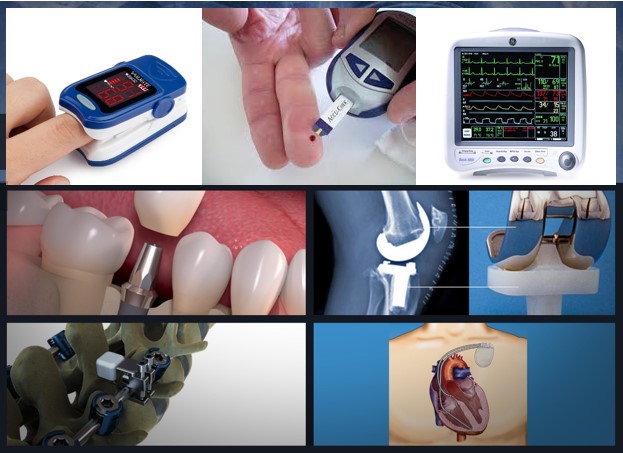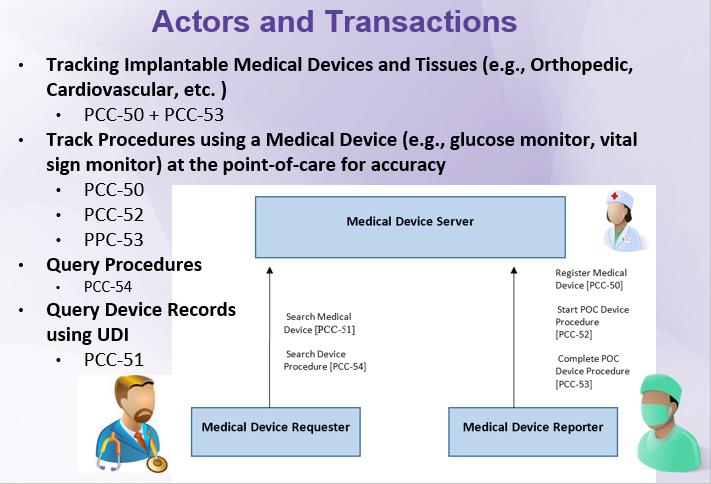Point-of-Care Medical Device Tracking (PMDT)
Summary
The Point-of-Care Medical Device Tracking (PMDT) Profile closes the loop on data acquisition at the point-of-care in support of reporting data about implantable medical devices (e.g., pacemaker, titanium plates) and medical devices (e.g., vital sign monitors, pulse oximeters, blood glucose monitors) during a procedure (e.g., Continuous Pulse Oximetry - 4A19XCZ, Insertion Pacemaker - 0JH607Z, Open Reduction Internal Fixation Elbow - 0PSJ04Z). The approach to acquiring the medical device information at the point-of-care enables it to be retrieved and reused at a later time.
Benefits
The benefits of this profile are:
• Closes the loop on data acquisition at the point-of-care to support reporting of medical device data
- o Medical device data can be exchanged with:
::*Other providers for continuum of care (e.g., Discharge Summary, Referrals)
:*Registries (e.g., Total Joint Registry)
:*Payers for reimbursement (e.g., government provided, private insurance)
- o Associating a medical device used for monitoring a disease or symptom of a disease (e.g., vital sign monitors, pulse oximeters, blood glucose monitors) to a patient for:
:*Querying the device or procedure using the medical devices UDI
:*Accurately matching the device data with the correct patient
• Increase patient safety
- o Traceability of medical devices (avoid use of counterfeit or illegitimate products)
- o Quality issues identified (e.g., recalls, adverse events)
• Increase accurate medical device data capture at the point-of-care
- o Eliminates human error from manual medical device data entry by using the devices unique device identifier (UDI) supplied in a structured format from the manufacturer
- o Provides a standards-based mechanism to capture medical device information consistently across the care setting
Details
Implantable medical devices are essential for the treatment and management of a wide variety of medical conditions. These devices are costly and concerns about illegitimate (i.e., counterfeit, stolen) products being used for patient care has become a global issue. Post-market surveillance of implantable medical devices can be challenging due to the longevity of the patient and the medical device unless there is a reliable implant tracking method. Using the HL7 FHIR StructureDefinition Resources (HL7 FHIR Device, HL7 FHIR Procedure Resource) to record information about medical devices (the unique device identifier [UDI]), including implantable/life-supporting/life-sustaining devices and tissues, provides a reliable and standards-based mechanism to perform a search and query function by using the HL7 FHIR RESTful Services (HTTP/HTTPS) to create/update and query existing records.
Systems Affected
- Enterprise EHRs
Actors & Transactions:
Specification
Profile Status: Trial Implementation
Documents:
Patient Care Coordination (PCC) IHE PCC Technical Framework:
Underlying Standards:
- FHIR STU3 [1]
See Also
IHE PCD-01 transactions based on HL7 v2.7 ORU_R01
Related Profiles
- IHE PCC Remote Patient Monitoring (RPM) Profile

